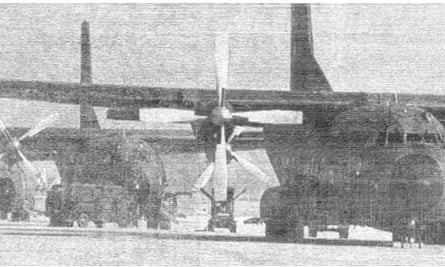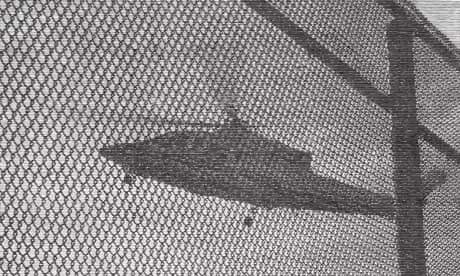Woodcut printing is an archaic pursuit. Its most notable exponents include the 15th-century Nuremberg master Albrecht Dürer and the 18th-century genius of Japanese printmaking, Hokusai. Difficult, time-consuming and traditionally realised with a team of craftsmen it is – needless to say – in danger of becoming entirely redundant. Not so though for contemporary German artist-printmaker Christiane Baumgartner; breathing fresh life into the technique, she uses it to examine life in the fast lane.
In breathtakingly complex black-and-white prints up to several metres long, Baumgartner depicts a high-speed world of machines – motorway traffic, planes and trains – with photo-realist exactitude. She works from her own video footage, capturing everyday details from her travels or from television. Transforming these video stills into a vast, hand-carved one-off can take up to a year. Yet the resulting prints never forget the nature of their source material. Thanks to her method of carving with a line grid, her images are scored with lines, just like a flickering video monitor.
Born in 1967, Baumgartner was raised in Leipzig, before the reunification of Germany. Today, largely thanks to painter Neo Rauch and his New Leipzig School, the city's art community is legendary – Baumgartner works out of a former cotton mill that houses numerous artist studios and galleries. A century ago though, it was the centre of German book publishing, and the Hochschule für Grafik and Buchkunst, where she originally trained, had long specialised in printmaking. After studying in London she began working in video and on her return to her home city decided to combine her two passions, with conceptually rich results.

The seven-metre triptych Luftbild is Baumgartner's longest work to date. Its central image is close to abstract, depicting a formation of fighter planes within a haze of concentric circles. These lines reverberate outwards like the aftershock of a great explosion. In fact, they're based on the interference between different images, when the artist filmed the curved surface of her old telly screen, to capture a second world war documentary, found by accident when she was channel-hopping one night.
Baumgartner's massive prints monumentalise chance moments, fusing the precise order of the digital realm with the hand-made, the immaterial with the physical. In a world governed by speed, she slows down the way information is processed, to better reflect on how we live now.
Why we like her: Transall, from 2002, is one of Baumgartner's best-known works. Another aeroplane woodcut print, it turns a newspaper shot of three military cargo planes on a runway into something awe-inspiring.
Cutting edge: Rather than conventional carving tools, Baumgartner has used an old kitchen knife to create her woodcuts.
Where can I see her? Christiane Baumgartner, Reel Time, is at Alan Cristea Gallery, London until 19 March.

Comments (…)
Sign in or create your Guardian account to join the discussion